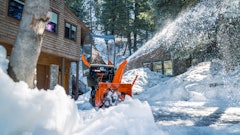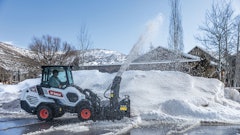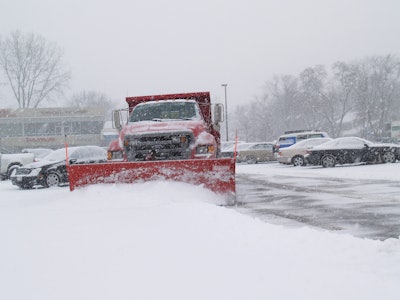
Preparation is what separates the great snow removal companies from the mediocre—and it all starts with a sound strategic plan.
Steven Cohen of GreenMark Consulting Group is a landscaping and snow removal veteran. He says one of the biggest challenges snow removal companies face is developing a well-balanced business model, i.e. how a company goes about generating sales and profits. Balance is important, especially in a seasonal, weather-driven business like snow removal. Balance allows you to better withstand the economic and climatic ups and downs that go with the territory.
"There are four key areas that must be 'strategic' to your company," Cohen explains.
- What kind of snow removal contractor are you?
- What type of contracts do you want?
- What market segments are you servicing and how might their needs differ?
- What must you do to become the top service provider in your niche?
These questions should each be thoroughly addressed in your snow removal strategic plan, something most snow contractors do not have. By developing one, you take a giant step toward becoming a better prepared, more proactive snow removal contractor, which should be your goal if you desire long-term success and profitability.
Your niche, your value proposition
It's important to identify your snow removal niche and ensure that you have the knowledge, capabilities and resources to properly service it. As the old saying goes, "You can't be everything to everybody." This is especially true in snow removal. Different types of clients often require different levels of service, and oftentimes equipment and/or materials.
Cohen says you should ask yourself, "What do I enjoy doing, and what don't I enjoy doing?" "Some contractors hate doing sidewalks," Cohen relates. "Some contractors don't like dealing with residential clients. Figure out what you like to do, determine if it's profitable, and go from there."
Next, ask yourself, "Where do we have the most experience?" You need to have confidence in your abilities and resources. For example, if your lawn maintenance business is 85% residential, will you be prepared—from an administrative and communications standpoint—to service a lot of commercial accounts with snow removal? "Only you know the answers to those types of questions," Cohen says. "My suggestion is to figure it out before you commit yourself to a market segment."
Target marketing is important. Think about client types and property sizes, along with the distance from your shop you're willing to travel. Think about the type of clients that actually value your services and are willing to pay for quality. Once you identify the markets you want to excel in, you can identify their unique needs. Then you can develop a blueprint for what you need to do to blow them away as their service provider.
"When you focus on a well-defined niche, it becomes more obvious to clients what you're all about," Cohen says. "When that happens, the client starts to narrow his or her choices. Then it becomes much easier for your company to stand out and rise to the top. By focusing on a niche, you're setting yourself up to become the obvious choice."
Contract types and risks to be aware of
There are several common contract types in snow removal. "No one type is better than the other," Cohen points out. "You simply must do what suits both you and the client. This means you have to educate the client on the different contract types. The ultimate goal is to help the client create budget certainty while you create revenue certainty.
"Whatever type you use, you want to focus the contract structure on solutions," Cohen continues. "You want to focus on risk management, performance and quality control, communication and budgetary requirements."
Let's look at the four common contract types.
Seasonal. This type of contract provides stability because there's a locked-in price for the season. You have revenue certainty while the client has budget certainty—a win-win.
That said, there are a few risks. For instance, you have to be highly efficient as a company to pull this off. The client often expects a lot of attention when it does snow, starting with the first flake. Jobs also tend to be equipment-intensive. And if it's a doozy of a winter, you could end up working really, really hard for that originally set fixed price.
Per-event. Billed per snow event, whether it snows 2 inches or 22. The contractor must do what it takes to keep the property maintained and safe—both during and after the storm.
The risk is that prolonged storms can become costly. Without a strong team, operational systems and job-costing measures in place, billing might not reflect actual hours and materials. Clients may also question what you did. It's helpful to carefully document time and materials used. Take before/after photos. And first and foremost, what is and is not included in your service should be clearly spelled out in the contract.
One potential reward is that some post-storm work—such as snow stacking and ice checks—could be deemed as "extras" and billed separately. One almost definite reward is that the service scope is easy to define. Thus, billing and collections are virtually confusion-free.
Per-push. Billed per service, typically on a couple-inch increment. For example, the contractor is supposed to plow and treat every two inches of snowfall.
The risk is that it's possible the contractor could end up over-servicing (and billing) the account, or at least be perceived to have done so. On the flip side, a contractor could end up under-servicing because the client dictates the service standards but then isn't happy with the result. In either event, there's a good chance the contract will be lost the following season.
Hourly. This type of contract often requires the same level of service as its "seasonal" counterpart. The difference is that you only get paid after rendering service. That's the risk: no snow, no money. You also have to be a good communicator to alert clients when you're on/off a property. On that note, you need to be an excellent job-coster to make sure billing accurately reflects the work you did and costs you incurred.
"Ideally you should have a combination of contract types in a given snow season," Cohen points out. "About 60-70% should be seasonal, 20-30% should be per-event, and the remaining should be a mix of per-push and/or hourly. This is a good mix. The seasonal contracts should be enough to keep the lights on and your people employed if it's a typical winter. The other contract types will then help balance out those heavier winters where you're likely to have some overages on your seasonal contracts—because the hourly, per-push and per-event contracts will generate some nice revenue."
Having a well-balanced snow removal business model—serving the right types of clients with a healthy mix of contract types—is a hallmark of high-performing snow companies. On that note, Cohen says you sometimes have to be willing to say "no" to new business.
"It's easy to see dollar signs and take on accounts that are beyond your capabilities or overload your routes," Cohen says. "Being a professional requires more than just saying, 'We'll figure it out.' Our industry is becoming more sophisticated. So are our clients. And so should you."

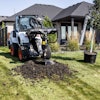


![Doosan Bobcat Wacker Neuson Stack 2ec Js Pb V6e[1]](https://img.greenindustrypros.com/mindful/acbm/workspaces/default/uploads/2025/12/doosan-bobcat-wacker-neuson-stack2ecjspbv6e1.CPyyz8ubHn.png?auto=format%2Ccompress&bg=fff&fill-color=fff&fit=fill&h=100&q=70&w=100)
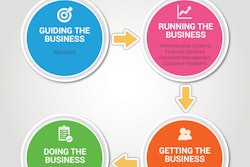


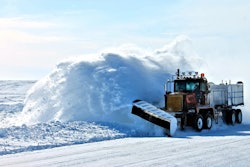
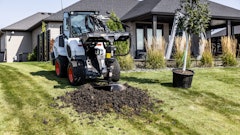
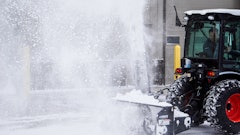

![Doosan Bobcat Wacker Neuson Stack 2ec Js Pb V6e[1]](https://img.greenindustrypros.com/mindful/acbm/workspaces/default/uploads/2025/12/doosan-bobcat-wacker-neuson-stack2ecjspbv6e1.CPyyz8ubHn.png?ar=16%3A9&auto=format%2Ccompress&bg=fff&fill-color=fff&fit=fill&h=135&q=70&w=240)
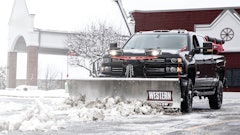
![Gravely Pro Turn Mach One My23 Dsc03139 Edit 1200x800 5b2df79[1]](https://img.greenindustrypros.com/mindful/acbm/workspaces/default/uploads/2025/10/gravely-pro-turn-mach-one-my23-dsc03139-edit-1200x800-5b2df791.BucBnDoN22.jpg?ar=16%3A9&auto=format%2Ccompress&fit=crop&h=135&q=70&w=240)
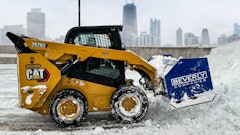

![Kubota Snow ah3 Sgv25ua[1]](https://img.greenindustrypros.com/mindful/acbm/workspaces/default/uploads/2025/10/kubota-snowah3sgv25ua1.bAUoUSziui.png?ar=16%3A9&auto=format%2Ccompress&bg=fff&fill-color=fff&fit=fill&h=135&q=70&w=240)

